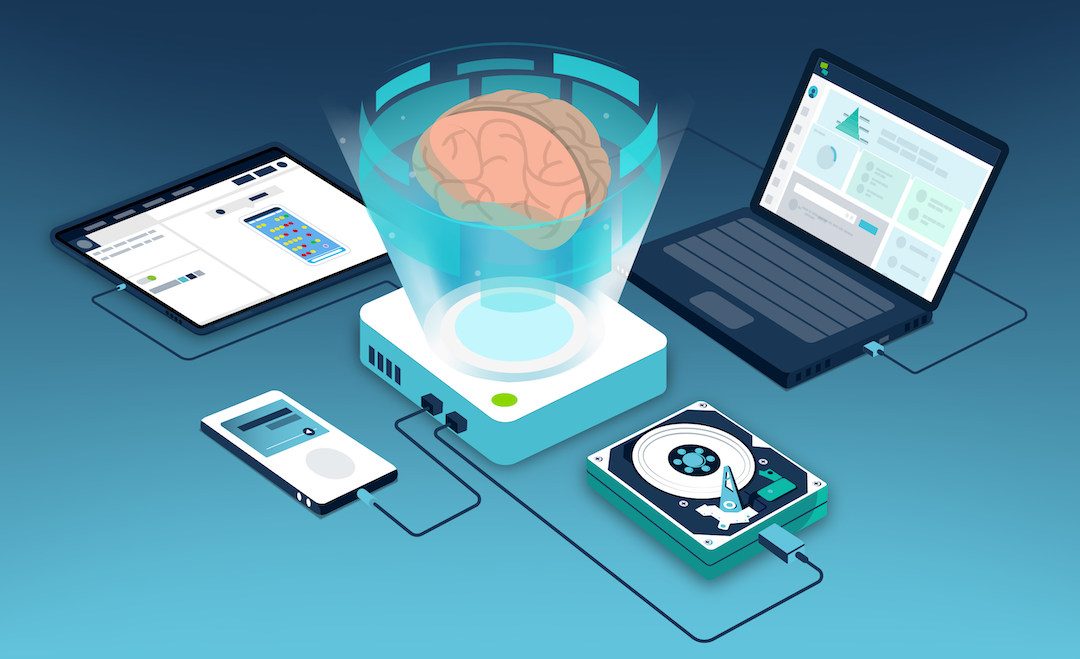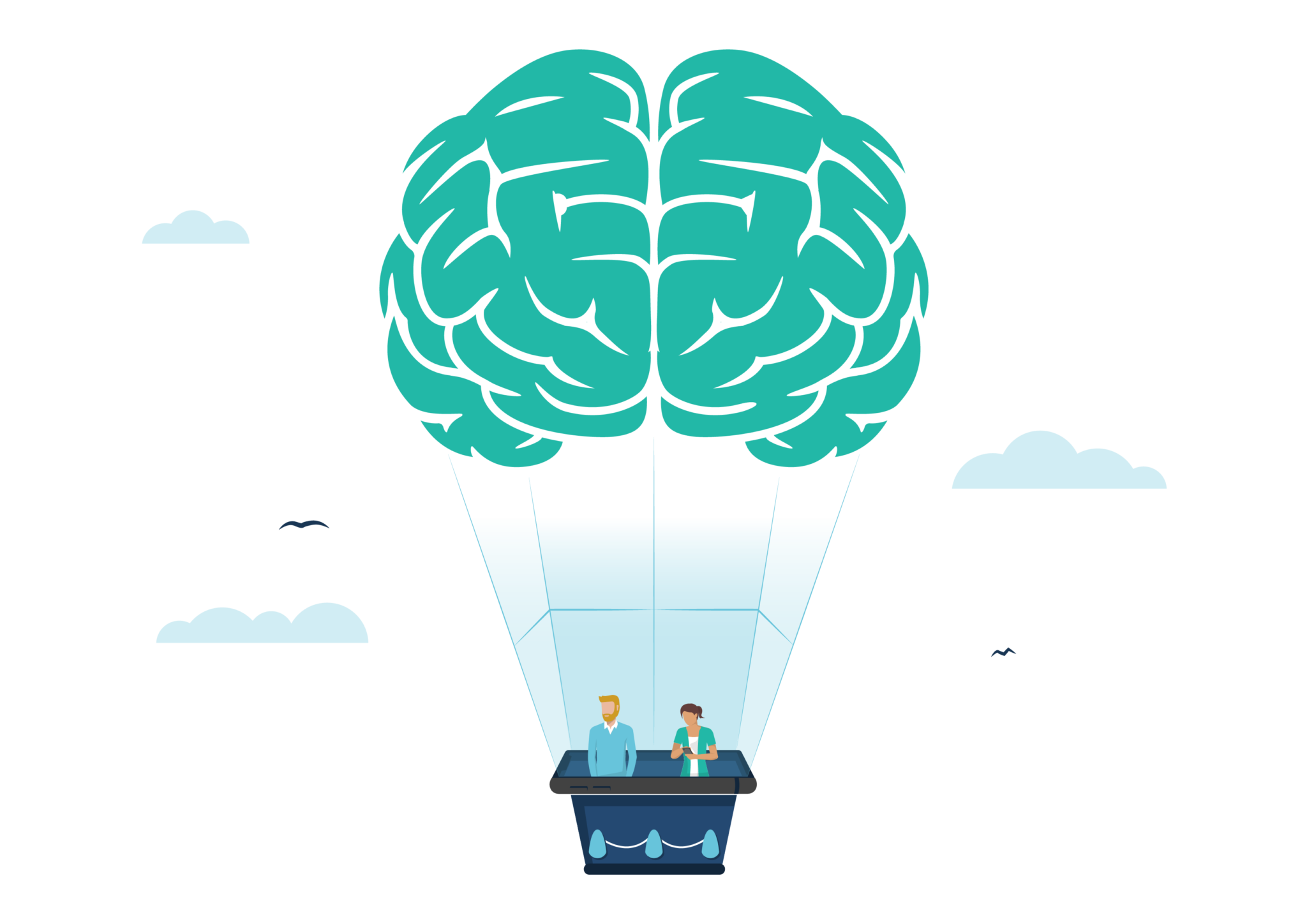 Why is it that we can faithfully recite our favourite song lyrics but struggle to recall what the newspaper said just a couple of days ago? And why is it that we know how to navigate our hometown perfectly even after years of living away?
Why is it that we can faithfully recite our favourite song lyrics but struggle to recall what the newspaper said just a couple of days ago? And why is it that we know how to navigate our hometown perfectly even after years of living away?
This all comes down to our memory function and its key processes. The brain is a wonderful thing, as it enables us to understand, store and remember information. However, this is not a flawless process.
We have looked into the neuroscience of learner engagement and gamification, amongst other topics. But today, we wanted to take a step back and explore the neuroscience of memory.
After all, memory plays a huge role in our everyday lives, including learning and development.
As such, without further ado, let’s explore how our brain forms, stores and processes memories.
Ready? Let’s go!
What Is Memory?
When we hear the word ‘memory’, we often think of flashbacks or our ability to retrieve experiences or knowledge we have experienced before. But there is a lot more to it than that!
Memories occur when the brain activates specific groups of neurons. As such, any stimulus we receive, like thinking about your dog, best friend or least favourite chocolate bar, results in a unique pattern of neuronal activity.
In fact, memory is a complex process that involves multiple parts of the brain working together. Indeed, we go through a variety of processes when we create memories. This includes encoding, storing and retrieving information.
These three functions are key aspects of information processing and memory functioning. As such, let’s have a look at these processes separately to truly understand how our memory works.
1. Memory Encoding
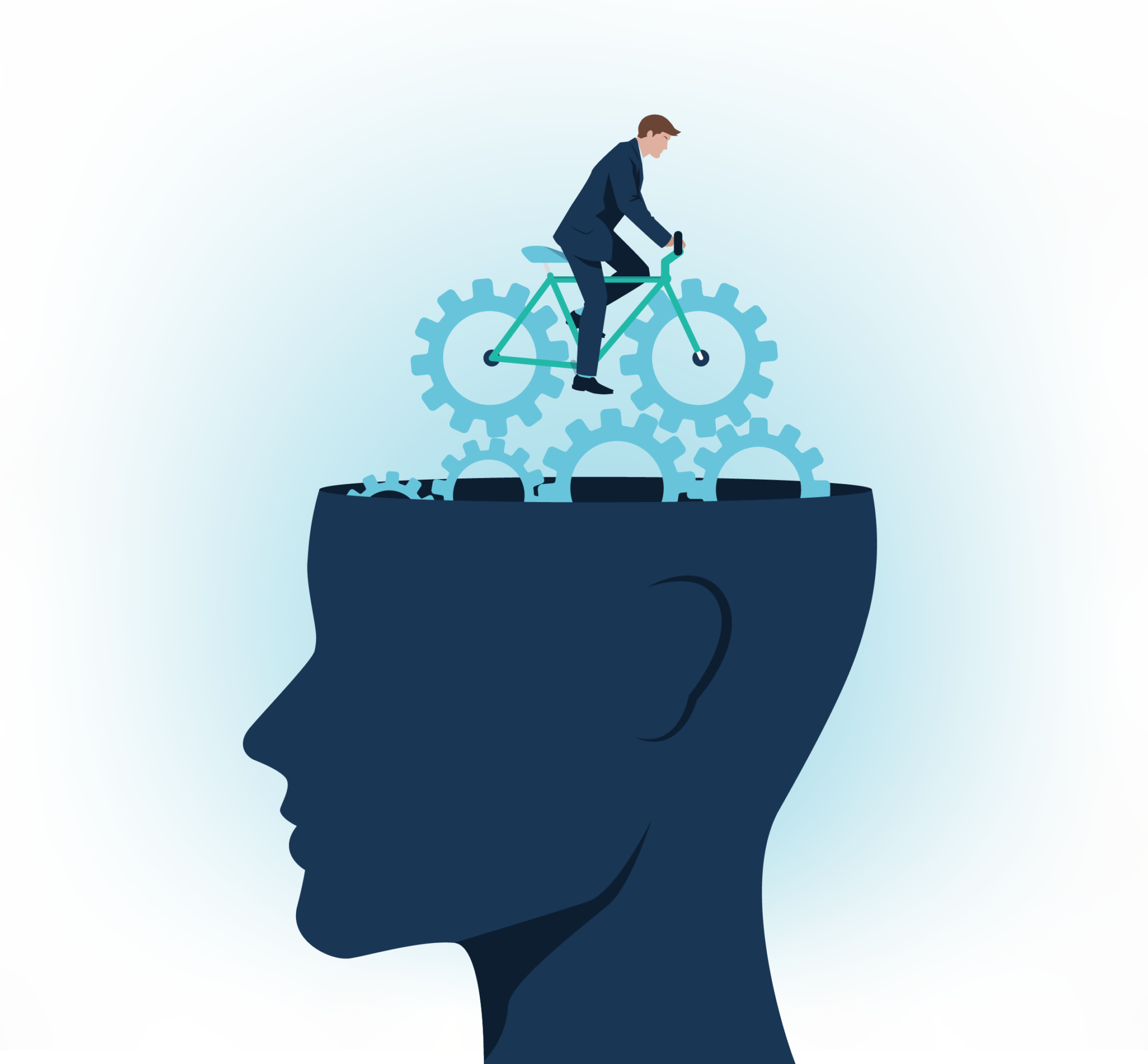
The brain is a vast and powerful organ. However, it cannot cope with every type of sensory input we receive.
In fact, when new information enters our memory system, we need to change it into a form that our brain can cope with and store effectively. This process is called memory encoding.
We will look into the different types of memory storage later on in this article. These different types have a big influence on how we store information and for how long.
However, ultimately, for us to retain information over time, we need to encode it into a more stable form of memory. This means converting the incoming sensory input into a neural code that we can then store and retrieve.
The coding process itself is influenced by various factors, like attention, repetition and relevance. There are also different types of encoding:
- Semantic encoding: Encoding based on the meaning of the information. Information processed in this way is often better structured and easier to remember. We also find it easier to encode semantic information.
- Visual encoding: Encoding based on the visual features of the information. This type of encoding processes new information based on its visual appearance, like colour, shape or texture. We store visual information in the visuospatial sketchpad, which is connected to our central executive.
- Acoustic encoding: Encoding based on the sound of the information. Acoustic encoding happens when we process information based on its auditory features, like pitch, tone or rhythm.
The differences between these types of encoding are easier to understand with an example.
For instance, if you are looking at a word in a dictionary, you are using visual encoding. However, if you are repeating it to yourself aloud, you are using acoustic encoding. Similarly, you will use semantic encoding if you establish its meaning and relevant context.
2. Memory Storage
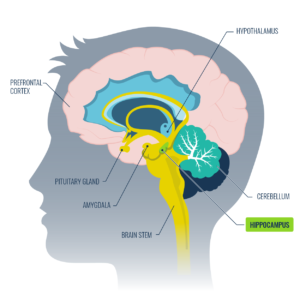
Memory storage refers to the process where we store information in the brain for later retrieval. As such, it plays a vital role in our survival, learning, problem-solving and personal identity.
Memories are stored in many areas of the brain. In fact, we store different kinds of memories across various interconnected brain regions.
For instance, our explicit memories (events that happened to you) and semantic memories (facts and information) are stored in the hippocampus, the neocortex and the amygdala. Implicit memories (motor memories), on the other hand, are stored in the basal ganglia and cerebellum.
Just to make things a bit more complicated, we also have three different types of memory storage. These are our sensory memory storage, short-term memory storage and long-term memory storage.
1. Sensory Memory
Sensory memory is the earliest stage of memory. We receive stimuli from our surroundings. This information is then stored in our sensory memory for a brief period of time.
There are three types of sensory memory.
- Echoic memory retains the information we gather through auditory stimuli.
- Iconic memory retains the information we gather through sight.
- Haptic memory retains data we acquire through touch.
The type of stimuli impacts how long the memory stays in our sensory memory. For instance, visual information only enters our sensory memory for no longer than a second. Auditory information, on the other hand, stays for three to four seconds.
As such, the role of sensory memory is mainly to pass information into the next stage: our short-term memory.
2. Short-Term Memory
Our short-term memory is the information we currently think about. This is why it’s also referred to as our ‘active memory’.
As the name suggests, we only store memories in our short-term memory for approximately 20 to 30 seconds. As such, we forget most of our short-term memories in no time. In fact, it has a relatively small capacity.
Psychologist George Miller published a now-famous paper in 1956. He suggested that our short-term memory only has capacity for storing a list of between five and nine items.
Later research, however, suggests that the true capacity might be closer to four.
Regardless, our short-term memory plays a crucial role in allowing some of the information to enter the next stage: our long-term memory.
3. Long-Term Memory
Lastly, information enters our long-term memory. Long-term memory refers to our ability to store and retrieve information over long periods of time.
It is divided into two types: explicit memory and implicit memory. Explicit memory is further divided into episodic memory (memory of events and experiences) and semantic memory (memory of facts and concepts). Implicit memory includes skills and habits that we acquire through repetition and practice.
Long-term memory is believed to have an unlimited capacity. However, our ability to retrieve information may decline with age or due to neurological conditions, like Alzheimer’s disease.
3. Memory Retrieval
The last memory process is retrieval. This refers to our ability to access information and get it out of our previously explored memory storage.
To do so, our brains reactivate the neural pathways we created during the initial encoding process. These pathways are also called synapses.
There are several triggers for memory retrieval. It can occur spontaneously, or it may get triggered by internal or external stimuli. We can also intentionally initiate memory retrieval ourselves.
Similarly, there are different types of memory retrieval:
- Recognition: We recognise information or stimuli we have encountered previously. For example, recognising a familiar face or fact we have learnt before.
- Recall: Our ability to retrieve information from memory without any external cues. For example, when you recall a phone number or address from memory.
- Relearning: This process involves learning information that we learnt previously but forgot. Relearning is often much quicker than initial learning because some memory traces still exist.
Various factors, like the strength of the memory trace, the type of memory and its context, can influence the memory retrieval process.
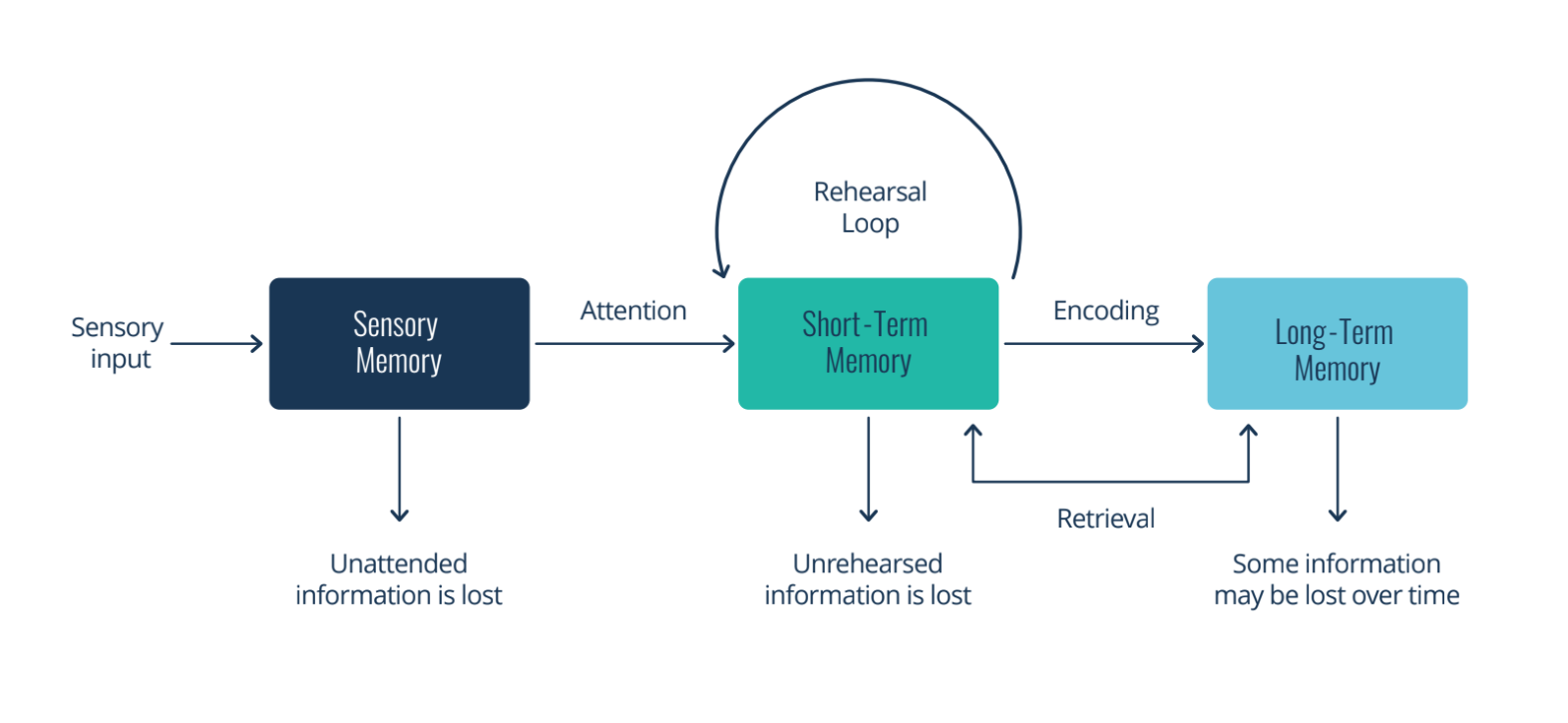
Why Are Memories Important?
In essence, memory is essential for our survival and everyday functioning. Without a memory of the past, operating in the present and the future becomes extremely difficult.
After all, we wouldn’t be able to remember faces or names, navigate familiar environments, operate tools, vehicles or technology, or even recall if we have serious allergies or illnesses.
Our memories are also critical for maintaining our personal identity. Memories help us remember who we are, where we came from, and the life experiences that have shaped who we are.
Similarly, our memory helps us maintain our emotional wellbeing as it allows us to remember important life events, relationships and experiences. In fact, memories are tightly tied to our emotions, and positive memories can provide a sense of happiness.
What’s more, memories are essential for learning. An adequate memory function allows us to store information and experiences that we can draw upon in the future. Without memories, we would have to relearn everything every time we encountered the information. Sounds exhausting, right?
Overall, memories are essential to our cognitive, emotional, and social well-being, and they are a fundamental aspect of our human experience.
Why Do We Forget Information?
So, we now know that memories are essential for us to operate in our daily lives and guide our decision-making and personality. If this is the case, why do we forget information?
Forgetting is a natural process that occurs when our brain fails to retrieve or retain information. This can happen for a variety of reasons:
- Encoding failure: If we don’t encode new information properly in the brain, we cannot retrieve it later. This is a common cause of forgetting. It happens when we do not pay attention to the information or fail to form a meaningful connection with it.
- Memory decay: It’s natural for memories to fade over time if they aren’t reinforced through use. In fact, the more we recall the memory, the stronger it becomes. This is because the connection between neurons strengthens. Similarly, weak memories eventually fade away.
- Interference: Other memories can interfere with the information we are trying to retrieve. This is especially common when similar memories compete for retrieval or when new memories overwrite old ones.
- Retrieval failure: Have you ever known that you know something but simply cannot recall it? For instance, where you left your keys or where you parked your car. This often happens when the context or cues for retrieval are not available.
- Motivated forgetting: Sometimes we actively work to forget memories. These memories tend to be traumatic or focused on disturbing events or experiences. Motivated forgetting has two forms: suppression (conscious forgetting) and repression (unconscious forgetting).
Research shows that time is one of the critical factors when it comes to memory failure. For example, the Forgetting Curve suggests we forget 90% of information within a week if we don’t try to retain it.
However, forgetting is a natural and somewhat necessary process that helps our brains to filter out both irrelevant and outdated information. As such, it helps us to prioritise what is important for our current needs.
8 Ways To Improve Your Memory
Even though forgetting is natural, there are strategies you can try to improve your memory.
While these tips won’t make you remember the first 60,000 digits of Pi overnight, they will give you easily actionable ways to improve your overall memory function.
Let’s take a look!
1. Get Enough Rest
Sleep is essential for effective memory consolidation. This is the process by which we strengthen and store memories in the brain. As such, try to get enough sleep to store memories more efficiently.
2. Practise Active Recall
There is a reason why spaced repetition is such an effective training method! Repetition helps you to encode the information beyond your short-term memory.
In fact, by actively recalling any new information you have learnt, you can help strengthen your memory of it. Practising active recall can be extremely useful in improving your memory.
3. Make Associations
Creating associations between new information and what you already know can help you to make the new information more memorable.
As such, try to attach meaning and relevance to the information you wish to store in your long-term memory. Similarly, you can group information together to make it easier to remember.
Creating a mind map can help you to achieve this.

4. Adopt Healthy Habits
Eating a healthy diet and exercising regularly have been shown to improve memory. In fact, exercise alone increases blood flow to the brain and promotes the growth of new brain cells.
With this in mind, try to get plenty of exercise and supplement it with a diet that is rich in fruits, vegetables and omega-3 fatty acids.
5. Write Things Down
Writing information down is a helpful way to implant memories into your brain. What’s even better, your written notes then serve as a reminder or reference later on.
6. Stimulate the Brain
Challenging your brain through mentally stimulating activities is a great way to improve your memory function. Try to learn a new skill or play brain games to keep engaging your brain.

7. Keep Your Stress Levels Low
High levels of stress can impair your memory. With this in mind, try to find ways to manage your stress.
For example, you could try practising mindfulness. It’s a great way to improve your memory by reducing stress and improving focus.
8. Learn in Small Chunks
Breaking information down into small chunks is an approach called microlearning. We are big fans of this process here at Growth Engineering!
After all, remembering a large amount of information can be overwhelming. This, in turn, makes it harder to retrieve and store information in your long-term memory.
As such, breaking information down into more manageable chunks also makes it easier to remember.
Final Words
Nowadays, we have a relatively good understanding of how the brain works when it comes to creating and keeping memories.
However, we still have a long way to go. Researchers continue to study the neuroscience of memory and how we can improve our encoding, storage and retrieval processes. Even so, one thing is clear: human memory is a complex process!
While we are able to retrieve huge amounts of information, we also encounter memory-related threats on a daily basis.
This emphasises the need for effective L&D programmes that repeat information in spaced intervals. After all, we want to build neural connections that are as strong as possible!
Our tip sheet, 100 Brain Science Tips to Boost Your Training Strategy, helps you to supercharge your training programme with neuroscience in mind. Get your free copy today!



